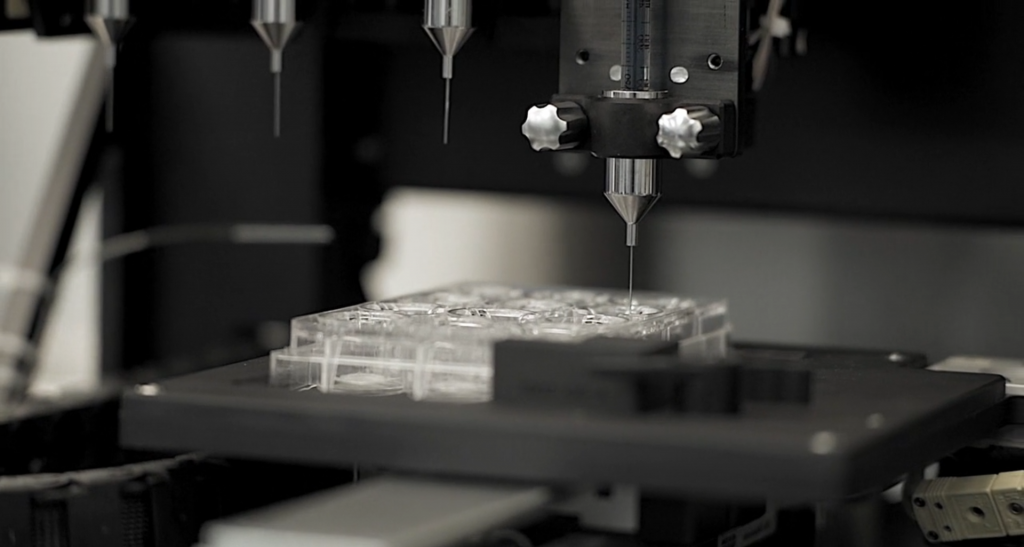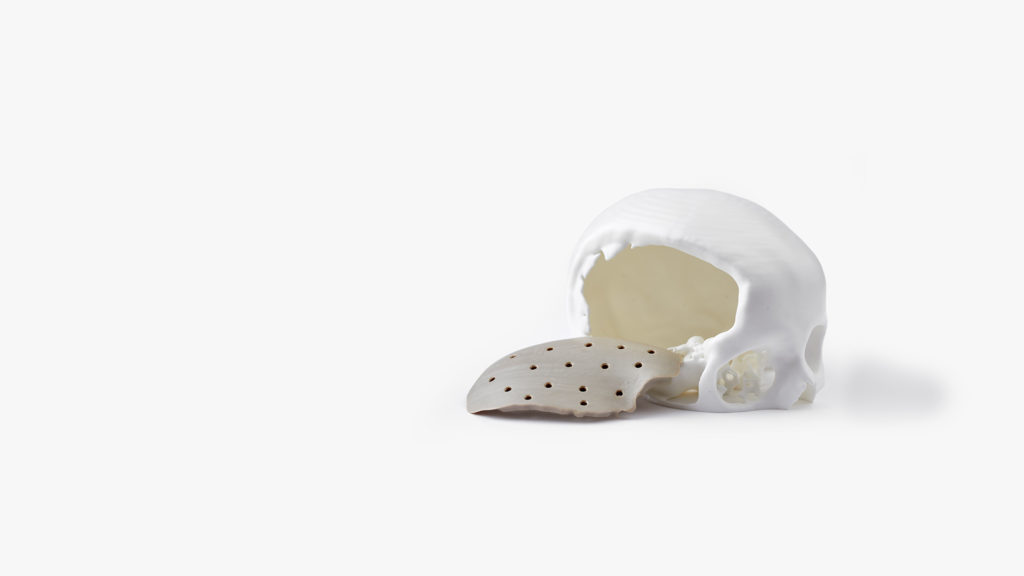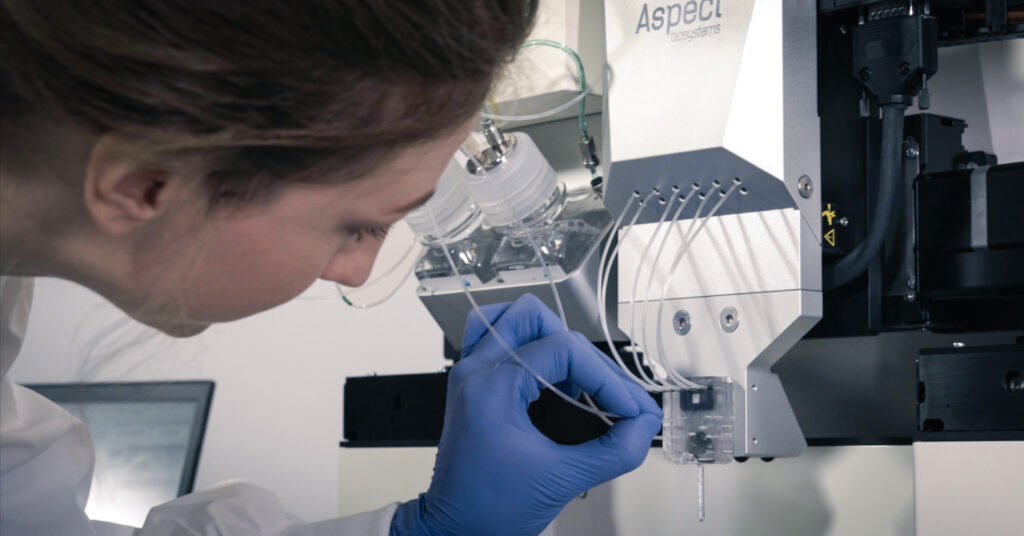Rue to those aspiring to be modern-day Robin Hoods of Wake Forest: the path to riches in bioprinting is fraught with challenges. It’s perplexing that the media has not fully embraced bioprinting. Yes, there were some stories about one particular startup a ways back and some magical kidney beans. Once in a while, fraudulent claims thrust a 3D-printed organ—typically something universally understood like a heart—into the limelight. Meanwhile, more obscure but equally critical organs, like the spleen, remain in the shadows. First rule of bioprinting, print things a five year old would recognize.
Despite the biotech sector routinely securing hundreds of millions in funding, this generosity has largely bypassed the bioprinting market. One notable exception is Aspect Biosystems, which is thriving. However, many other companies have yet to captivate venture capitalists to the same degree.
Why is the Path to Success so Hard?
The journey from invention to clinical trial and beyond is especially arduous in bioprinting. Clinical trials may require validation of machines, materials, and specific treatments separately, a process that can cost tens of millions—or even billions—of dollars. Moreover, the lack of vascularization remains a critical barrier; without it, nothing developed will function effectively in the body.
This persistent lack of tangible success dampens belief in future breakthroughs, compounding the challenge of attracting investment. Currently, investors are lukewarm on most ventures, with the exception of deep tech. To capture their attention, one might need to “nerd it up” even more, perhaps enlisting physicists to deepen the appeal. In a world where money is expensive and uncertainty reigns, riskier bets like bioprinting become less appealing compared to revenue-generating, profitable businesses already on the market. Money loves other money, prioritizing safety over speculative innovation.
The boom and bust cycles of venture capital exacerbate this hesitance. Lower interest rates often fuel fantastical investments, encouraging the wildest projects to flourish. Conversely, periods of deleveraging refocus attention on practical and achievable goals. This is hardly an environment conducive to ambitious ventures like printing lungs.
The “hardware is hard” trope, while overused, underscores a real challenge in bioprinting. Many venture capitalists (VCs) lack experience funding true innovation, preferring ventures that “rent eyeballs”—essentially recycling attention and capital among themselves. This daisy chain of superficial investments falters when faced with bioprinting’s complexities, which lie at the edge of what is physically possible. Unlike marketing challenges, these are genuine innovation hurdles, further alienating VCs stuck in echo chambers of incrementalism.
Theranos, which raised $1.3 billion, exemplifies this dynamic—not because due diligence was performed, but because investors trusted that others would share their belief. Such herd mentality might suffice for attention-based businesses but is ill-suited for something as intricate as bioprinting an actual eyeball. Consequently, the traditional startup path presents a formidable challenge for this industry.
Organovo
Organovo had everything going for it: global attention, a plethora of qualified individuals, substantial funding, and even the platform of a TED Talk. Despite raising over $117 million and going public—albeit through a SPAC-like OTC deal with Real Estate Restoration and Rental, not a heavyweight IPO—the company failed to cement its position as a leader in bioprinting. At its peak, it was briefly valued at over $700 million, but its market cap has since plummeted to approximately $6 million, a figure close to the cash it reportedly holds.
Currently, the company is developing a Phase 2 treatment for inflammatory bowel disease (IBD). Revenue has been minimal for years, generating only around $400,000 last year, supplemented by income from a patent settlement with Cellink. Over its 17-year existence, Organovo has engaged in partnerships such as one with Merck and collaborated with L’Oréal on 3D-printed skin. It also reportedly commercialized liver tissue and achieved promising results in studies on liver models. Despite these milestones, the company seems unable to chart a viable path forward.
The overarching challenge lies in the broader bioprinting sector. The “one startup to rule them all” approach has not proven effective, nor has a focus on single organ systems or treatments. Companies that exclusively manufacture bioprinters have experienced limited growth as well. This raises the pressing question: what could actually work in this space?
Five Modes
To survive and thrive in today’s world, bioprinting companies must adopt strategies that distinguish them from others in the field. There appear to be five modes of operation that could potentially lead to success. While it’s too early to determine their ultimate effectiveness, the companies employing these strategies seem to be performing better than others. Their business models and approaches position them for possible success, unlike those waiting passively for a big pharma “white knight” that may never arrive. This reluctance from pharma firms is not due to a lack of promise in the field, but because acquiring a single bioprinting company often doesn’t significantly impact a pharmaceutical company’s balance sheet. Instead, these firms can afford to wait and acquire them later, possibly at a lower cost.
- The 3D Systems of Bioprinting
- We Are a Platform
- Drug Discovery
- Printers for Science
- Half an Eyeball
The 3D Systems of Bioprinting
This approach has been explored by companies like Cellink, now known as BICO, and 3D Systems. 3D Systems pivoted to healthcare, focusing on partnerships aimed at 3D-printing lungs. However, this pivot appears to face a time constraint, as the company’s commitment to this path is currently uncertain. The initial strategy seemed promising: generating revenue from orthopedic implant printing, selling printers to hospitals, and developing medical software and compliance expertise. The idea was to leverage their scanning capabilities to evolve into a comprehensive medical software and hardware service provider. This position, alongside consistent revenue, could then support bioprinting efforts, ultimately leading to acquisition by a major player like Roche—a seemingly brilliant plan. While it may still materialize, its future remains unclear.
BICO, one of the few publicly traded companies in this niche, has pursued a different yet complementary strategy. By acquiring a diverse range of bioprinting firms, it has assembled an array of technologies under one roof. The notion of Nano Dimension acquiring BICO was compelling, but the company now faces a more prolonged path, with its share price significantly reduced from its peak. Nonetheless, BICO remains a potentially attractive target for a Roche-like firm seeking exposure to bioprinting. With steady persistence and the accelerating pace of technology, the company could achieve significant growth. It is now slimming down and shedding assets, happily it is able to get cash for them which is a good sign.
We Are a Platform
The platform and ecosystem approaches are being championed most notably by Poietis and Aspect Biosystems. These companies aim to integrate all the necessary software, hardware, and expertise into a single platform to enable the success of bioprinting. By providing this comprehensive ecosystem, they can collaborate with researchers, pharmaceutical companies, and other vendors to jointly commercialize treatments, procedures, or even entirely new businesses.
Instead of merely facilitating soft tissue printing, these firms aspire to become the foundational infrastructure—the actual arteries—of the bioprinting industry. This strategy holds strong appeal for investors, as it carries a “winner-takes-all” allure. Moreover, it diversifies risk by not relying on the success of a single treatment or outcome. This “picks and shovels” approach positions the companies to derive long-term value across multiple use cases.
The path to success for this approach remains uncertain. For now, fostering broad partnerships and maintaining a collaborative stance seems to be the core strategy.
Drug Discovery
Drug discovery is currently the most lucrative avenue for bioprinting companies. FluidForm got big bucks from Johnson & Johnson and Merck due to its drug discovery capabilities. Similarly, Triastek’s partnership with BioNTech, which begins with $10 million and could potentially expand to $2 billion, underscores the financial promise of this route.
This approach offers immediate revenue and the potential for substantial future earnings. Success hinges on establishing partnerships with major firms, which requires a robust patent portfolio, strategic patience, and strong industry connections. For now, this pathway appears to be the most financially rewarding strategy.
Printers for Science
The “printers for science” approach is comparatively unexciting but practical. This model involves selling bioprinters to universities and research institutions for their own applications. Companies like UpNano and others have adopted this strategy, with many smaller firms settling for it as a viable option. While it requires considerably more effort than the drug discovery route, it offers a steady income stream and could extend the lifespan of many firms in a cash-constrained market.
This approach focuses on the straightforward business of selling a product, which, despite its simplicity, could prove to be a successful strategy. However, the market faces challenges, including a wide variety of bioprinting technologies—ranging from advanced LIFT systems to syringe extruder Prusa clones. The lack of a well-defined market, unclear user needs, and significant variation in pricing and capabilities all serve to constrain this segment.
Half an Eyeball
The “half an eyeball” approach is particularly intriguing, though concrete examples of its success remain elusive. This model involves a phased commercialization strategy: starting with simpler, marketable products that leverage early-stage technologies, and progressively advancing toward the ultimate goal. For instance, a company aiming to bioprint skin might initially sell hydrogel plasters for athletic wound recovery (reusing their support structures). As its technology matures, it could offer scar mitigation plasters for cosmetic applications, and eventually create skin-like plasters for burn victims (by using its intermediate skin material). By monetizing intermediate milestones, companies can generate revenue and sustain operations while advancing toward their end goals.
This strategy is compelling for its pragmatism, balancing innovation with incremental commercial achievements. It diversifies risk and ensures steady cash flow, providing much-needed runway in a resource-intensive field like bioprinting.
The five strategies outlined—targeted pivots, platform ecosystems, drug discovery, scientific printing, and phased commercialization—represent diverse pathways to survival and growth. Whether these firms succeed will depend on their ability to navigate technological, financial, and market challenges while maintaining strategic focus and adaptability. The potential is immense, but the journey will likely be long and fraught with uncertainty.
Subscribe to Our Email Newsletter
Stay up-to-date on all the latest news from the 3D printing industry and receive information and offers from third party vendors.
You May Also Like
Formnext Day Three: Rock & Zoll
The biggest news on day three was, of course, the reactions to the band at the exhibitor’s party. The soirée was well attended, with the crowd rocking on until early...
3D Printing Webinar and Event Roundup: October 27, 2024
This week, Stratasys and Würth Additive Group continue their tours, and ICAM 2024 takes places in Atlanta, Georgia. Other offerings include an AM Symposium, webinars about 3D printing dental implants...
Flashforge Guider 3 Ultra 3D Printer Review: The Redemption Arc?
Disclosure: The Guider 3 Ultra was provided to me by Flashforge free of charge for the purpose of this review. I have not received any other compensation. All opinions expressed...
NAMIC’s Global Additive Manufacturing Summit: Innovation, Sustainability, and Strategic Collaboration in Singapore
Once again, we joined business people and researchers from around the world in Singapore for Global Additive Manufacturing Summit. Singapore’s national 3D printing partner, the National Additive Manufacturing Innovation Cluster...







































